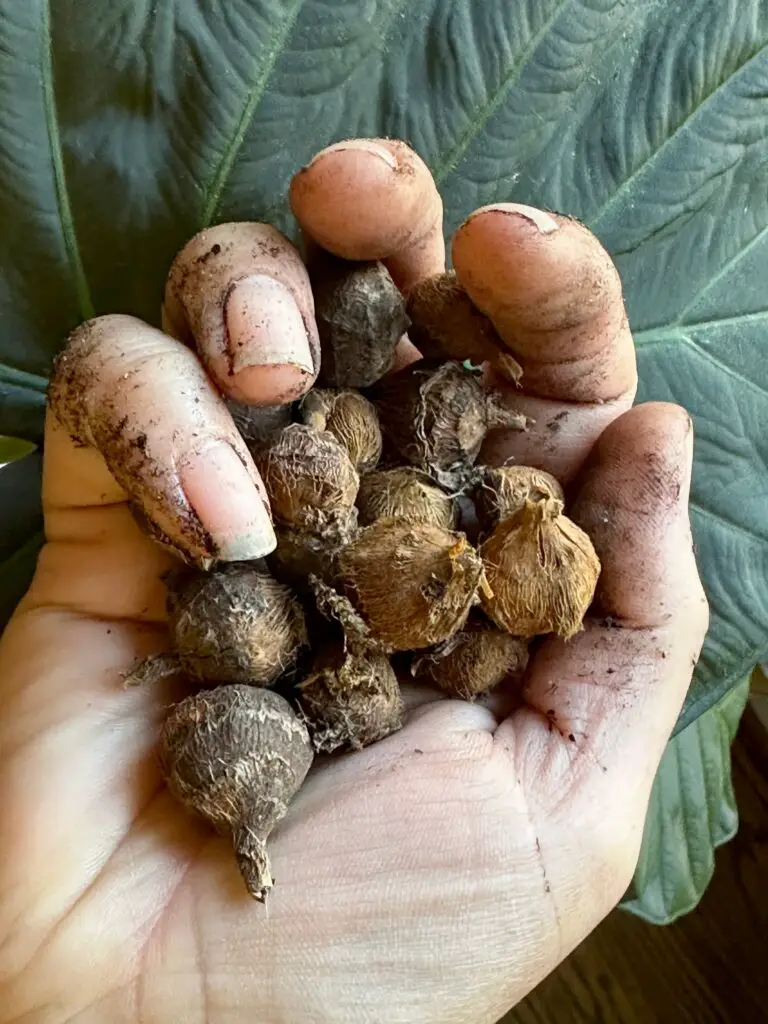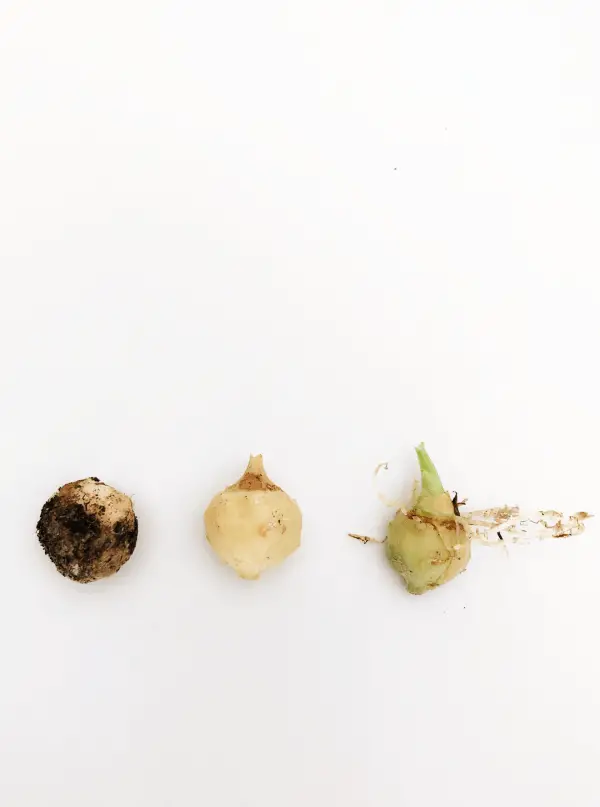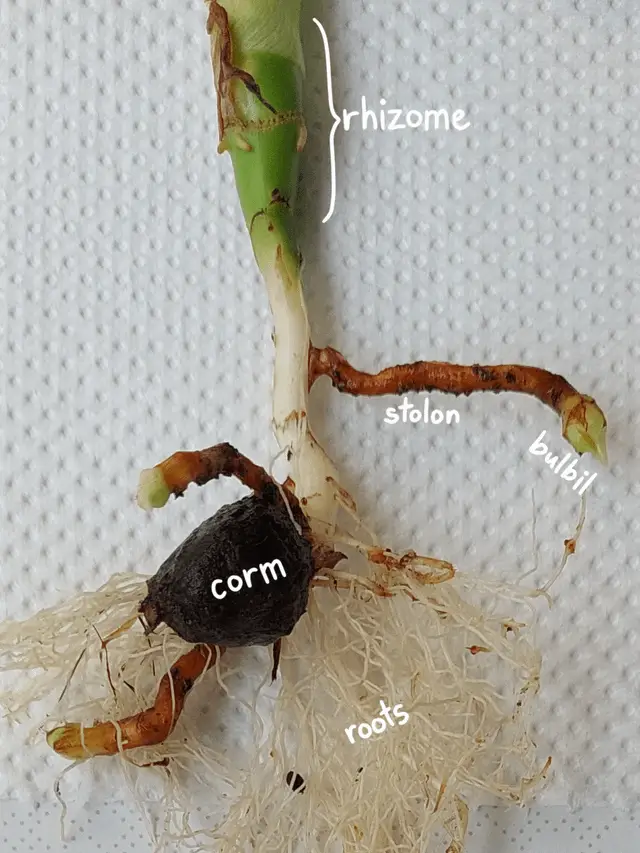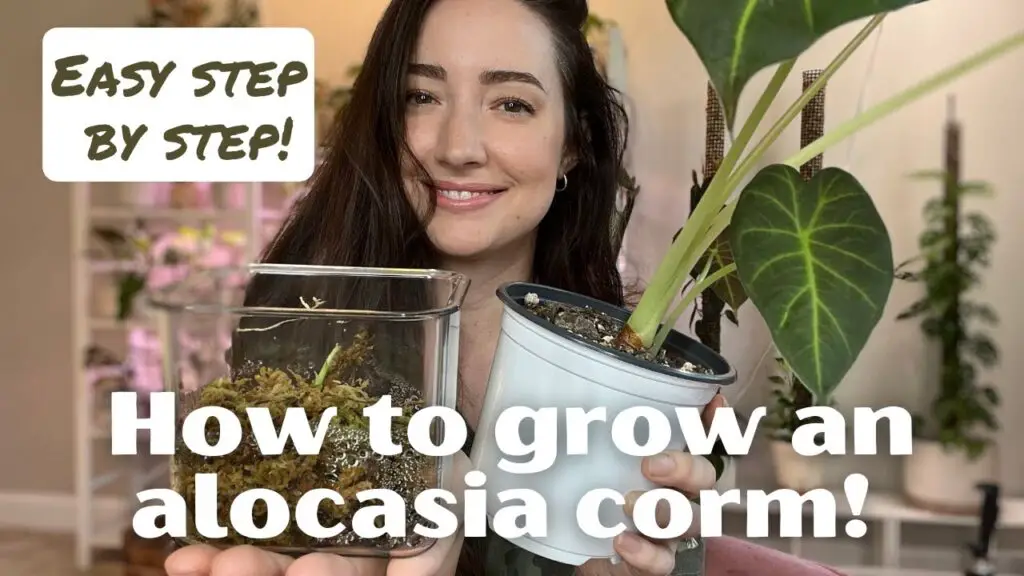Alocasia corms are underground storage organs that store nutrients and energy for the plant. When purchasing them, it’s essential to consider the type, size, and health of the corms to ensure successful growth.
Understanding Alocasia Corms
Alocasia, commonly known as elephant ear plants, are popular for their striking foliage and unique shapes. These tropical plants thrive in warm, humid environments and can be grown both indoors and outdoors. Alocasia corms serve as the main method of propagation for these plants. They provide the necessary resources for new growth, allowing the plant to flourish.

Corms are bulb-like structures that store nutrients. They are essential for the plant’s lifecycle, especially during dormancy when the plant conserves energy. When buying Alocasia corms, it is crucial to understand their characteristics and how they can affect the growth of your plant.
Types of Alocasia Corms
There are several types of Alocasia plants available in the market. Each type may have different care requirements and growth patterns. Some of the most popular include:
- Alocasia Polly: Known for its striking arrow-shaped leaves with prominent veins.
- Alocasia Zebrina: Features zebra-like striped stems that add a unique aesthetic.
- Alocasia Macrorrhiza: Also known as giant taro, it has large leaves and can grow quite tall.
- Alocasia Amazonica: A hybrid that showcases dark green leaves with a glossy finish.
Choosing Healthy Corms
When purchasing Alocasia corms, it is essential to select healthy ones to ensure robust growth. Here are some key factors to consider:

- Firmness: Choose corms that feel firm to the touch. Soft or mushy corms may indicate rot.
- Size: Larger corms typically have more stored energy, which can lead to healthier plants.
- Appearance: Look for corms without visible signs of mold or damage.
Where to Buy Alocasia Corms
Alocasia corms can be found at various locations, including local nurseries, garden centers, and online retailers. Each option has its advantages:
| Source | Advantages | Disadvantages |
|---|---|---|
| Local Nurseries | Healthy plants and local advice | Limited variety |
| Online Retailers | Wider selection and convenience | Shipping time and potential damage during transit |
| Garden Centers | Variety of plants and accessories | Prices may be higher |
While buying online may offer more choices, it is important to research the seller’s reputation. Look for reviews and ratings from previous customers. This will help ensure you receive quality corms that can thrive in your environment.
Preparing for Planting
Once you have purchased your Alocasia corms, preparation is key for successful planting. Consider the following steps:

- Choose the Right Pot: Use a pot with drainage holes to prevent water accumulation.
- Select Quality Soil: A well-draining potting mix is ideal for Alocasia corms.
- Watering: Water the corms lightly after planting. Avoid overwatering, as this can lead to rot.
Following these guidelines will help ensure that your Alocasia corms grow into healthy, vibrant plants. Understanding their needs from the start will set you on the path to successful gardening with these stunning tropical beauties.
Care and Maintenance of Alocasia Corms
After planting your Alocasia corms, proper care and maintenance are essential for their growth and development. These tropical plants have specific needs that must be met to thrive. Here are some critical aspects to consider:
Light Requirements
Alocasia plants prefer bright, indirect light. Too much direct sunlight can scorch their leaves, while insufficient light can hinder growth. Here are some tips for providing the right lighting:
- Indoors: Place your Alocasia near a window with filtered light. A sheer curtain can help diffuse harsh sunlight.
- Outdoors: If planting outside, choose a location that receives partial shade, especially during the hottest parts of the day.
- Supplemental Lighting: If natural light is limited, consider using grow lights to provide adequate illumination.
Watering Needs
Watering is one of the most crucial aspects of caring for Alocasia corms. The goal is to keep the soil consistently moist but not soggy. Here are some guidelines:

- Check Soil Moisture: Before watering, check the top inch of soil. If it feels dry, it’s time to water.
- Avoid Overwatering: Ensure that excess water drains out of the pot. Standing water can lead to root rot.
- Humidity: Alocasia plants thrive in high humidity. Misting the leaves or using a humidifier can help maintain moisture in the air.
Fertilizing Alocasia
To promote healthy growth, regular fertilization is important. Alocasia corms benefit from nutrient-rich soil throughout the growing season. Consider these steps:
- Type of Fertilizer: Use a balanced, water-soluble fertilizer diluted to half strength.
- Frequency: Fertilize every 4-6 weeks during the spring and summer months. Reduce or stop fertilizing during the fall and winter when growth slows down.
- Application: Apply fertilizer to damp soil to prevent root burn.
Pest Management
Like many houseplants, Alocasia can be susceptible to pests such as spider mites, aphids, and mealybugs. Early detection and management are key to keeping your plants healthy. Here are some strategies:
- Regular Inspections: Check the undersides of leaves and stems regularly for signs of pests.
- Natural Remedies: Use insecticidal soap or neem oil as natural treatments for pest infestations.
- Isolation: If you notice pests, isolate the affected plant to prevent the spread to other plants.
Repotting Alocasia Corms
As your Alocasia grows, it may become root-bound or outgrow its pot. Repotting is essential to provide more space for growth. Here’s how to do it correctly:
- Timing: The best time to repot is during the spring when the plant is actively growing.
- Select a New Pot: Choose a pot that is 1-2 inches larger in diameter than the current one.
- Soil Preparation: Use fresh, well-draining potting mix when repotting to provide new nutrients.
- Transplanting: Gently remove the plant from its old pot and loosen any tightly bound roots before placing it in the new pot.
Signs of Stress in Alocasia Plants
Caring for Alocasia plants requires monitoring their health closely. Look for signs of stress to address any issues promptly:
- Yellowing Leaves: This can indicate overwatering or insufficient nutrients.
- Browning Leaf Edges: Often a sign of low humidity or underwatering.
- Pale or Small Leaves: May suggest inadequate light or nutrient deficiencies.
Recognizing these signs early allows you to make necessary adjustments in care, promoting a healthier environment for your Alocasia corms.
2>Common Problems and Solutions for Alocasia Corms Even with the best care, Alocasia corms can face various problems. Understanding these issues and knowing how to address them is vital for maintaining healthy plants. Below are some common problems along with their solutions. Root rot is one of the most common problems affecting Alocasia plants, often caused by overwatering or poorly draining soil. Pests can be a significant threat to the health of your Alocasia. Common pests include spider mites, aphids, and mealybugs. Leaf drop can occur due to various environmental factors, including sudden changes in temperature or humidity levels. Curling leaves often indicate stress due to factors such as underwatering or insufficient light. Brown spots can indicate either pest damage or leaf spot diseases caused by fungal infections. If you want to expand your collection of Alocasia plants, propagating corms is an effective method. Here are two primary propagation techniques: The most common method of propagation involves dividing the corms during repotting. While less common, growing Alocasia from seeds is another propagation method. The changing seasons can significantly impact your Alocasia plants. Understanding how to care for them during these transitions is crucial. During these active growth periods, Alocasia requires more attention to ensure they thrive. As temperatures drop, these plants enter a period of dormancy. Adjust your care routine accordingly. Caring for Alocasia throughout the seasons will help them remain healthy and vibrant. By adjusting their care based on seasonal changes, you can ensure that your plants thrive year-round. Alocasia plants come in a diverse range of varieties, each with unique features and care requirements. Understanding these varieties can help you choose the right one for your collection or garden. Alocasia Polly, also known as African Mask Plant, is prized for its striking arrow-shaped leaves with prominent veins. This variety thrives in bright, indirect light and enjoys high humidity. It typically grows to about 2-3 feet tall, making it a great indoor plant. Alocasia Zebrina stands out with its unique zebra-patterned stems. This variety requires similar care to Alocasia Polly but may need slightly more water due to its larger leaves. It can grow up to 4 feet tall under optimal conditions. Also known as African Mask Plant, Alocasia Amazonica is a hybrid that features dark green, glossy leaves with white veins. This variety benefits from bright, indirect light and should be kept moderately moist. It can reach heights of 2-3 feet. Commonly referred to as Giant Taro, Alocasia Macrorrhiza can grow significantly larger than other varieties, reaching heights of up to 6 feet. It has broad leaves that require ample space and consistent moisture to thrive. When purchasing Alocasia corms, whether online or in-store, there are several tips to keep in mind to ensure you get quality specimens: Wh ile growing Alocasia corms can be rewarding, it’s important to be aware of potential challenges you may face: Caring for Alocasia corms requires commitment and attention to detail. By understanding their specific needs, you can create an ideal environment that promotes healthy growth. From selecting the right corms to ensuring they have adequate light and humidity, every step plays a vital role in the plant’s success. Remember that patience is essential when growing Alocasia. These plants may take time to adjust to their new environments and establish themselves fully. With proper care, they will reward you with their stunning foliage and unique charm. Whether you’re a seasoned plant enthusiast or just starting your gardening journey, Alocasia corms offer an exciting opportunity to experience the beauty of tropical plants. With the right knowledge and resources, you can successfully cultivate these remarkable specimens in your home or garden. Overall, investing in Alocasia corms can be a fulfilling endeavor. As you nurture your plants and witness their growth, you’ll gain not only beautiful greenery but also an enriching gardening experience.Root Rot
Pest Infestations
Leaf Drop
Leaf Curling
Brown Spots on Leaves
Propagation Techniques for Alocasia Corms
Division of Corms
Growing from Seeds
Caring for Alocasia During Seasonal Changes
Spring and Summer Care
Fall and Winter Care
Common Varieties of Alocasia
Alocasia Polly
Alocasia Zebrina
Alocasia Amazonica
Alocasia Macrorrhiza
Shopping for Alocasia Corms
Potential Challenges in Growing Alocasia Corms
Final Thoughts
